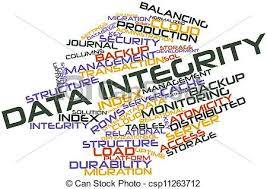

It’s called Disaster DIY. Do-it-yourself projects may seem easy to accomplish at first, but once that bathroom renovation, kitchen makeover, or plumbing project is under way, the complexity of the plan only becomes clear in hindsight. Being an avid DIY television show watcher, it’s easy to get swept up into the actually believing that it’s as easy as 1-2-3… and its fun until something goes wrong (“I didn’t know that wall was load bearing!”).
Deciding whether or not to “call in the pros” is the same for data integrity. With an increasing need to ensure the quality of the ever growing amount of company data, can IT teams simply build the software needed to keep their company’s information clean and reliable?
It’s a question of “build versus buy” and the answer is fairly straightforward. When it comes to end-to-end data accuracy – not to mention valuable reporting and dashboard tools – building your own software to monitor data integrity could be a Disaster DIY project of its very own.
We run into that quite frequently. A lot of times we’ll show our data integrity solutions to a group of IT professionals and they say, “Oh, we can just build that.” It’s certainly an option companies can exercise, but in reality, our products are based on decades of experience, and it’s not exactly something you could build yourself in a couple of months. Realistically, you can also build your own 2x4s from trees in your backyard, right?
Much like hiring an experienced electrician to wire your house, investing in automated data integrity software translates to a higher ROI in the long term. While attempting to wire your own house or build data solutions in-house may be the less expensive option upfront (which is questionable), it can lead to costly mistakes or wasted time. In both cases, it’s better to do it right the first time. It’s an upfront investment, but once done, you are guaranteed it is done correctly and within industry leading practices.
Ultimately it’s a matter of whether or not trustworthy data is a requirement for the success of your organization. Implementing controls at potentially thousands of data entry points within an enterprise will ensure accurate information by monitoring the data throughout its lifecycle and flagging errors along the way. Compare that to reconciling records at the end, and then spending time figuring out where something went wrong all after the fact.
Accurate data means less work, less frustration and more productivity, all of which are linked to cost savings.
Without data integrity controls in place, you spend just as much time – if not more – going back to validate your data. The cost savings associated with reducing employee hours and repetitive work is definitely a return on investment.
Avoiding Disaster DIY projects is about knowing when it’s time to call in the pros and when to hang up your hammer. When it comes to data integrity, make sure you do it right the first time.